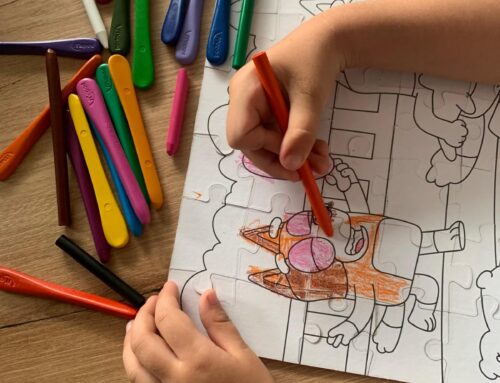What is Verbal Behavior?
In Behavior Analysis, when discussing communication or language, we refer to verbal behavior, a concept introduced by B.F. Skinner. According to Skinner, language is not a special process separate from other behavior; instead, it is learned, acquired, and maintained by the same variables and principles that regulate any other kind of behavior.
Verbal behavior is defined by its function rather than its form. This means that verbal behavior is any behavior that produces a change in the actions of others and is socially reinforced. It includes not only speech but also any form of expression that evokes socially mediated reinforcement, such as a child crying or pointing at a desired object.
Consequently, we do not refer to individuals as “nonverbal,” but rather as those without a vocal repertoire or with limited verbal repertoires. All individuals, to some degree, can generate changes in others to improve their environment.
From an Applied Behavior Analysis (ABA) perspective, the use of Alternative Communication Systems (ACS), such as sign language, Picture Exchange Communication Systems (PECS), or electronic devices, also qualifies as verbal behavior. These tools enable individuals with communication difficulties to interact effectively with their environment, making their evaluation and use essential when vocal behavior development is impeded or fails to produce expected results.
Roles in Verbal Behavior: Speaker and Listener
Skinner introduced the terms speaker and listener to describe roles in communication. These roles are independent but often interact to form more complex behaviors.
- Listener: More than just receptive, the listener does not merely receive the message but must learn to interpret and respond to arbitrary signals based on their function. For example, understanding the word “apple” involves more than hearing the sound; the listener must learn its functional meaning.
- Speaker: Rather than expressive, as it is not a metaphorical construct stemming from within; instead, the individual actively participates and modifies the behavior of others through communication.
Understanding Verbal Behavior
From a functional analysis perspective, verbal behaviors are classified based on their antecedents and consequences. These categories, known as basic verbal operants, include:
- Mands: Requests or demands that express a direct desire, either to obtain something pleasant or to stop an unpleasant situation. They are reinforced by the specific object or activity requested (or its cessation). Examples:
- A child says “water,” and their mother gives them a bottle.
- A child points to a water bottle, and their father hands it over.
- While in the passenger seat, you say to the driver, “Slow down!” and they reduce speed.
- Tacts: Identifying or naming things in the environment to share them with others, reinforced by generalized reinforcers such as social attention and interaction. Examples:
- A child says “doggy” upon seeing a dog, and their parent responds, “Look at the dog running!”
- A child points at a butterfly, and their parent exclaims, “How beautiful!”
- While walking with a friend, you say, “It smells awful here,” and your friend replies, “Yeah, sewers always stink in the summer.”
- Intraverbals: Responses to verbal stimuli without a direct correspondence to present stimuli, also maintained by generalized reinforcers such as social approval or attention. Examples:
- A woman asks a child, “What’s your name?” and the child replies with their name. The woman says, “What a lovely name!”
- At the doctor’s office, the physician asks about your medications. You name the medicine, and the doctor nods and writes it down.
- In class, a student read the question “Name the parts of a cell” and answers by listing them on the board. The teacher responds, “Great job!” and notes the performance in their records.
- Duplics: Responses that exactly match the antecedent in form and content. This skill is essential for developing more complex verbal responses and is maintained by generalized reinforcers like praise or smiles. Types include:
- Echoic: Vocal repetition of the presented antecedent. For example:
- A parent says, “Look, a doggy,” and the baby repeats “doggy.” The parent responds, “That’s right, a doggy!”
- In Spanish class, the teacher says, “In Spanish, ‘caffelatte’ is ‘café con leche’”, and the students repeat “café con leche”. The teacher replies, “Now you’re ready to order coffee in Madrid!”
- Motor Imitation: Repeating a motor movement with a communicative purpose, such as pointing or signing. For example, when teaching sign language to a hearing-impaired person, the instructor points at a car and signs “car,” and the student repeats the movement.
- Copying Text: Replicating written text, such as a child completing a handwriting workbook and receiving praise for neat writing.
- Echoic: Vocal repetition of the presented antecedent. For example:
- Codics: Responses that correspond in content but not form to their antecedents. These responses are also maintained by generalized reinforcers. Types include:
- Textual (Reading): Responding vocally to written text. For instance, a child reads “pharmacy” from a sign, and their parent says, “Yes, this is the pharmacy. Good job!”
- Transcription or Dictation: Converting spoken words into written form. For example, you dictate cleaning supplies to your housemate, who writes them down, and you thank them for taking care of the shopping.
Benefits of Addressing Communication Through Verbal Behavior
Focusing on communication from this perspective allows for:
- Analyzing environmental conditions necessary for the development of specific responses.
- Teaching functional and practical communication skills.
- Providing tools that enhance interaction with others, independence, and quality of life.
- Utilizing alternative systems for those with vocal difficulties to develop the same communicative functions.
For instance, a child who learns to request a toy gains greater access to reinforcement, strengthening their requesting behavior. Similarly, a child who shares their environment with others receives attention, or one who responds to others sustains interactions. This approach ensures communication is effective and socially meaningful.
Conclusion
The analysis of verbal behavior offers an effective, evidence-based framework for teaching communication skills tailored to each learner’s individual needs. Understanding communication as learned behavior opens a world of possibilities for fostering inclusion and autonomy.
Bibliography
- Cooper, J. O., Heron, T. E., Heward, W. L. (2020). Applied Behavior Analysis (3rd ed.). Pearson.
- Greer, R. D., Ross, D. E. (2008). Verbal Behavior Analysis: Inducing and Expanding New Verbal Capabilities in Children with Language Delays. Pearson.
- Skinner, B. F. (1957). Verbal behavior. Copley Publishing Group.


